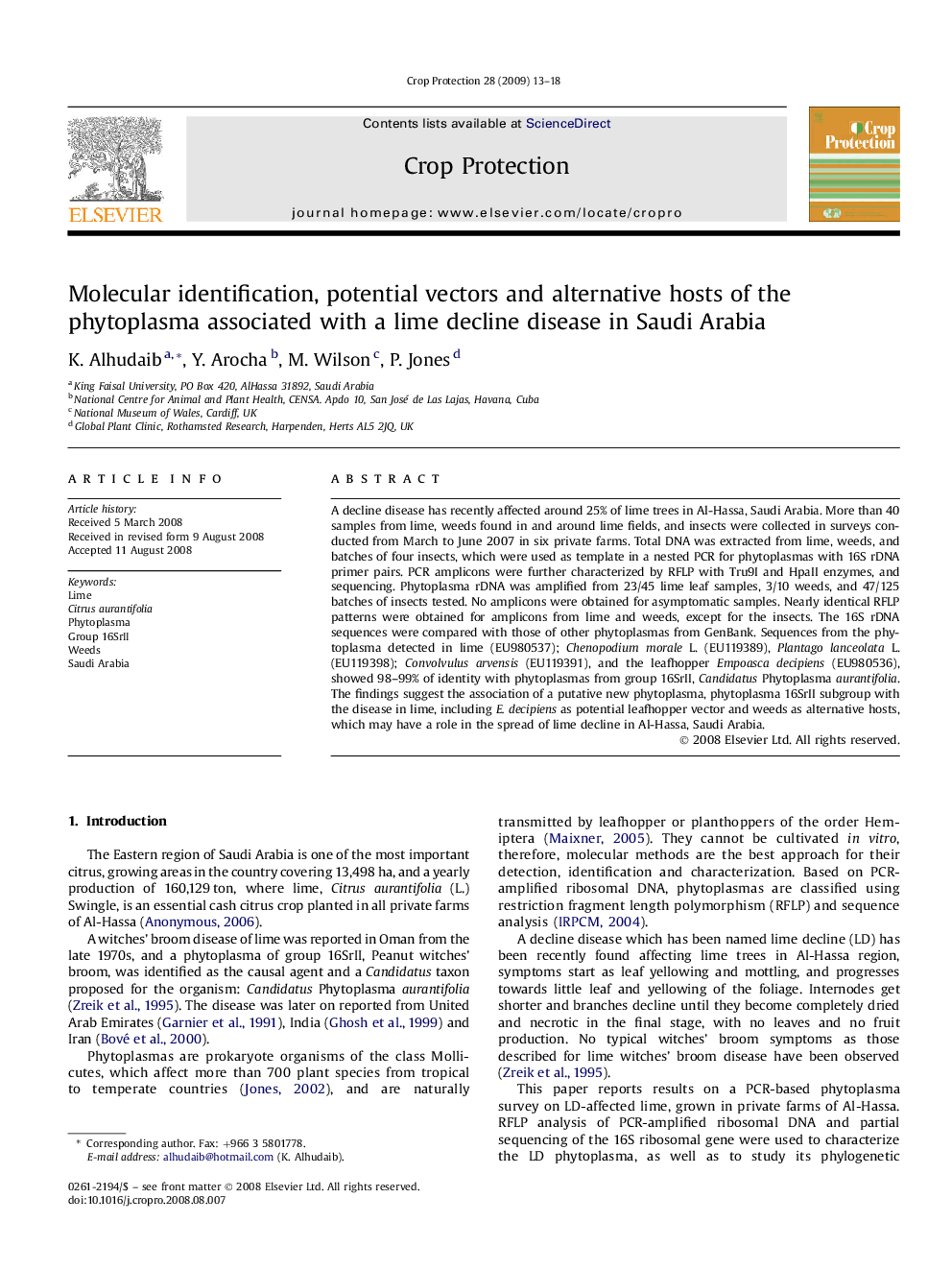| Article ID | Journal | Published Year | Pages | File Type |
|---|---|---|---|---|
| 4507539 | Crop Protection | 2009 | 6 Pages |
Abstract
A decline disease has recently affected around 25% of lime trees in Al-Hassa, Saudi Arabia. More than 40 samples from lime, weeds found in and around lime fields, and insects were collected in surveys conducted from March to June 2007 in six private farms. Total DNA was extracted from lime, weeds, and batches of four insects, which were used as template in a nested PCR for phytoplasmas with 16S rDNA primer pairs. PCR amplicons were further characterized by RFLP with Tru9I and HpaII enzymes, and sequencing. Phytoplasma rDNA was amplified from 23/45 lime leaf samples, 3/10 weeds, and 47/125 batches of insects tested. No amplicons were obtained for asymptomatic samples. Nearly identical RFLP patterns were obtained for amplicons from lime and weeds, except for the insects. The 16S rDNA sequences were compared with those of other phytoplasmas from GenBank. Sequences from the phytoplasma detected in lime (EU980537); Chenopodium morale L. (EU119389), Plantago lanceolata L. (EU119398); Convolvulus arvensis (EU119391), and the leafhopper Empoasca decipiens (EU980536), showed 98-99% of identity with phytoplasmas from group 16SrII, Candidatus Phytoplasma aurantifolia. The findings suggest the association of a putative new phytoplasma, phytoplasma 16SrII subgroup with the disease in lime, including E. decipiens as potential leafhopper vector and weeds as alternative hosts, which may have a role in the spread of lime decline in Al-Hassa, Saudi Arabia.
Related Topics
Life Sciences
Agricultural and Biological Sciences
Agronomy and Crop Science
Authors
K. Alhudaib, Y. Arocha, M. Wilson, P. Jones,
